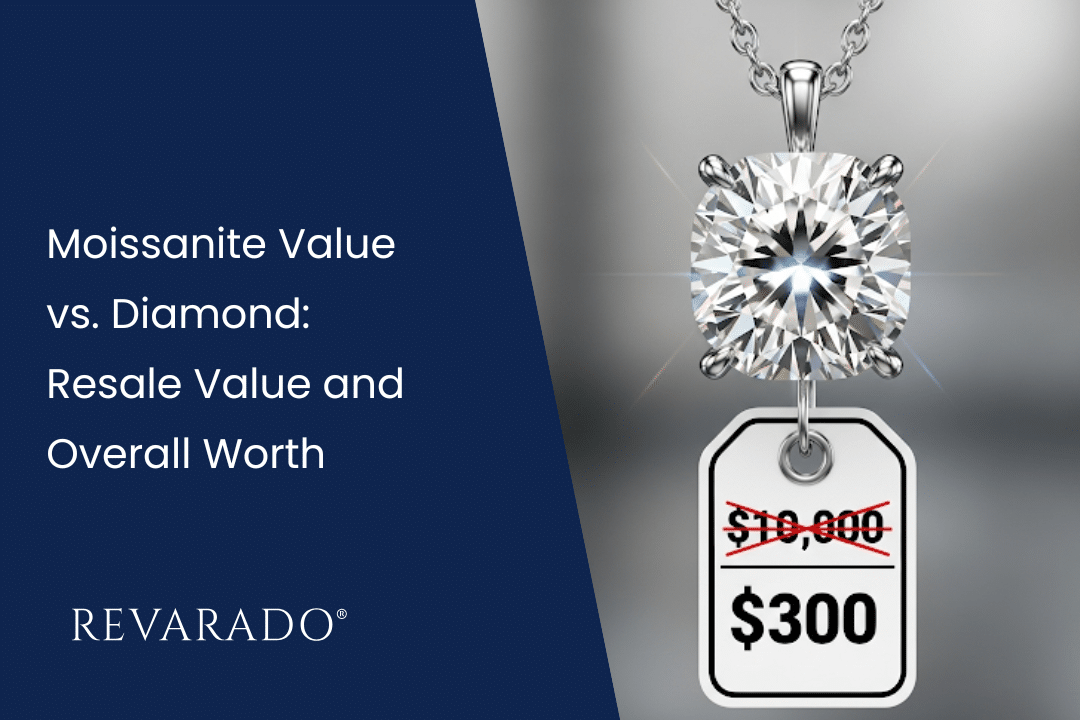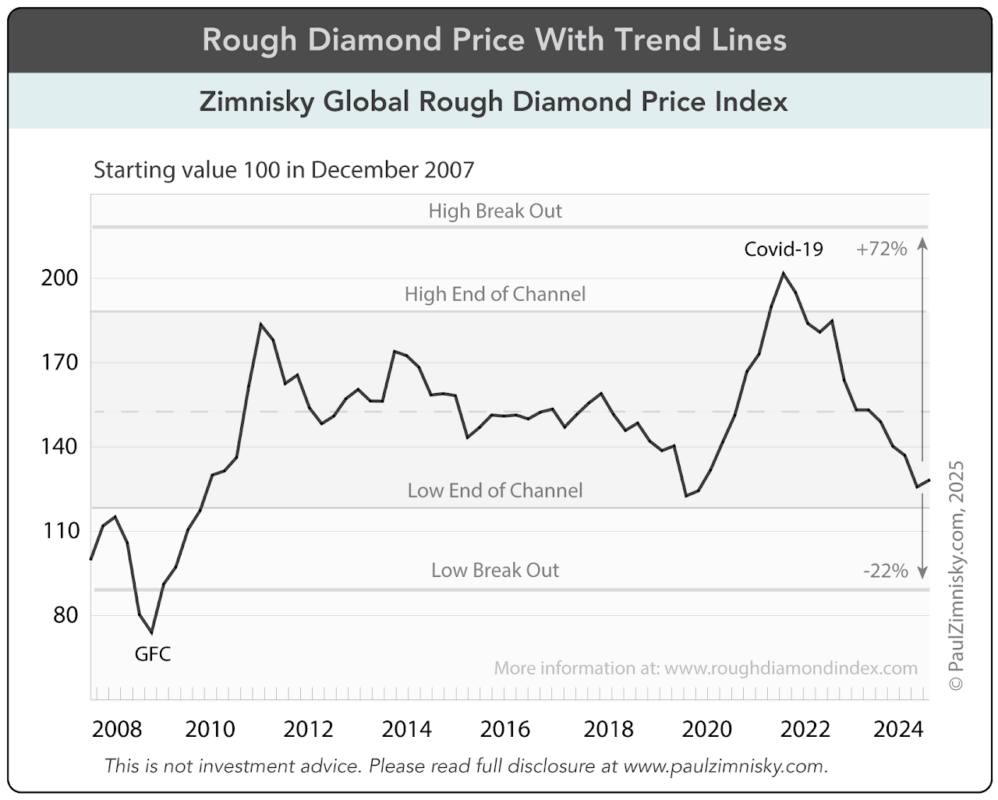Moissanite Value vs. Diamond: Resale Value and Overall Worth

Moissanite has surged in popularity as a dazzling alternative to diamonds – but how does moissanite value really stack up? Many shoppers ask whether moissanite holds value over time, especially compared to traditional diamonds. In this in-depth guide, we’ll explore moissanite’s value from all angles, including initial cost, resale value, and how it compares to diamonds in terms of price per carat and long-term worth. By the end, you’ll understand why moissanite is often celebrated as a brilliant, affordable, and ethical gemstone choice.
What Is Moissanite and Why Does It Have Value?
Moissanite is a gemstone made of silicon carbide that was originally discovered in meteorites. Today, virtually all moissanite gems are lab-grown, yielding a stone with exceptional brilliance and durability. In fact, moissanite ranks 9.25 on the Mohs hardness scale – just shy of a diamond’s 10 – making it one of the hardest gems available. This hardness means moissanite is highly resistant to scratching and suitable for daily wear, much like a diamond. Moissanite’s refractive index is even higher than diamond’s (2.65 vs 2.42), which gives it a fiery, rainbow sparkle that many people love. In terms of appearance and durability, moissanite provides lasting beauty that holds up over years of wear.
However, the most talked-about aspect of moissanite’s value is its price. Moissanite offers the look of a diamond at a dramatically lower cost. This affordability is a key part of its value proposition, which we’ll explore next.
Moissanite vs. Diamond: Price and Value Comparison
One of the biggest reasons couples choose moissanite is the value for money. Simply put, a moissanite of similar size and appearance costs only a fraction of the price of a diamond. In many cases, a moissanite gem might cost around 10–20% of an equivalent diamond’s price. This huge price difference means you can get a larger or higher-quality center stone for the same budget if you opt for moissanite.
To put it in perspective with some numbers:
- A 1-carat colorless diamond can easily cost around $10,000 (or more) depending on quality, whereas a 1-carat colorless moissanite may be priced around $300. In other words, the moissanite is less than 10% of the cost of the diamond for a similar size and color grade.
- A 2-carat colorless diamond ring often runs well over $30,000, while a 2-carat moissanite ring might cost roughly $500 in comparison. That moissanite is perhaps 2% of the diamond’s price, illustrating massive savings.
- Even at larger sizes, the gap remains wide. A 3-carat moissanite could be in the ballpark of $800 or under, whereas a 3-carat diamond might be over $50,000 (depending on quality). The moissanite lets you achieve a big, impressive look at less than 10% of the diamond cost.

Looking at Paul Zimnisky’s diamond index confirms that diamonds are not an investment instrument. The only assets that can genuinely be considered investment-grade are precious metals such as gold, silver, or platinum. That’s why, when you purchase a diamond or another item labeled as a “precious stone,” the only part that tends to retain or increase in value over time is the metal content itself, not the stone.
This is where moissanite has an advantage: when you invest in moissanite jewelry, the majority of the value comes from the precious metal (gold, platinum, etc.) it is set in. As a result, you’re left with a much stronger resale value ratio than diamond, since the intrinsic worth of the precious metal remains, even if the stone itself does not appreciate.
These examples show that moissanite delivers extraordinary value per carat. You’re paying primarily for the craftsmanship and materials, not the rarity of a mined diamond. At Revarado, we’ve embraced this advantage – our collection features brilliant moissanite engagement rings that rival diamond rings while being a fraction of the cost (truly “affordable luxury”).
It’s important to note that moissanite pricing can vary with quality (color/clarity) and size, but even the best grades are far cheaper than diamonds. Larger moissanite stones do increase in price, but not exponentially like diamonds do. For example, the jump in cost from a 1-carat to a 2-carat moissanite is relatively modest, whereas diamond prices skyrocket as you go up in carat weight. This means you get more sparkle per dollar with moissanite. Some couples love that they can afford a bigger stone or a more elaborate ring design by choosing moissanite instead of a diamond.
Quick Comparison of Moissanite Value vs. Diamond
To summarize the value differences, here’s a quick side-by-side comparison of moissanite and diamond on key points:
- Price: Moissanite is dramatically less expensive. It often costs less than 10% of a comparable diamond’s price. Diamonds are among the most expensive gemstones due to their controlled supply and traditional prestige.
- Intrinsic Gem Value: Diamonds are valued as natural gemstones with rarity (especially high grades), whereas moissanite’s value comes from being a high-quality simulant or alternative. Moissanite is lab-created and not considered “rare,” which is a main reason it’s more affordable.
- Resale Value: We’ll dive deeper into this below, but neither stone holds 100% of its value after purchase. Diamonds tend to have a stronger secondhand market and may resell for around 25%–50% of their original value. Moissanites have a more limited resale market and might fetch roughly 25%–75% of their original price (since they cost less to begin with). In both cases, you should not expect to make money investing in standard jewelry, but diamonds have a longer history of being resold or traded in.
As you can see, moissanite offers exceptional value across the board for someone seeking a beautiful, durable gemstone without the hefty diamond price tag. Next, let’s address a common question: Does moissanite hold its value over time, especially if you ever decide to resell it?
Does Moissanite Hold Value? (Resale Value Explained)
When we talk about a gem “holding value,” we usually mean its resale value – how much you could get for it later if you sold it. It’s important to be realistic: most jewelry (diamond or moissanite) will not resell for what you paid. Retail jewelry includes markups for labor, branding, and retail overhead, and the secondhand market pays only for the raw gem/metal value and demand. Even diamonds, despite their reputation, depreciate once you walk out of the store.
Moissanite’s resale value is generally lower in absolute terms than a diamond’s, simply because the initial cost is lower and the market for used moissanite is still developing. Being a lab-created stone that can be produced as needed, moissanite isn’t rare or “precious” in the traditional sense. As one jewelry expert bluntly put it, “Moissanite rings [hold] no resale value… to be fair, diamonds don’t hold value either”. In other words, neither moissanite nor a typical diamond should be viewed as a great financial investment for resale. The value they hold is more in their beauty and sentiment than in dollar amount.
That said, let’s quantify it: According to jewelry industry sources, both moissanites and diamonds lose a significant portion of their value after the initial sale. Most independent jewelers estimate that a resold moissanite might go for roughly 25% to 75% of its original retail price (depending on condition and finding the right buyer). For a resold diamond, the figure is about 25% to 50% of the original price in many cases. Notice that in percentage terms, the ranges overlap quite a bit. Diamonds have a centuries-old resale/trade market (e.g., via pawn shops or dealers), while moissanite resale often happens peer-to-peer (like via online marketplaces or specialty groups). The key point: neither is likely to return what you paid, and diamonds only seem to hold value better because their starting price is so high.
Why doesn’t moissanite hold more monetary value? The primary reason is supply and perception. Because moissanite is lab-made and abundant, it lacks the “scarcity value” that natural diamonds have. Diamonds have had decades of marketing establishing them as valuable heirlooms (even though, as noted, they also depreciate in practice). Moissanite is newer and viewed as a practical purchase, not an investment. Furthermore, technology can always produce more or even better-quality moissanites over time, which keeps prices relatively stable or falling. As one gem expert noted, technology is ever-advancing, so a lab-grown product doesn’t have a fixed standard of value like a natural rarity does. In simpler terms, a moissanite’s worth is in wearing it, not reselling it.
The good news? Because moissanite’s initial cost is so much lower, any depreciation hits your wallet far less than a diamond’s would. For example, if you spend $1,000 on a moissanite ring and later sell it for $500, you’ve lost $500. But someone who spent $5,000 on a diamond and resells it for $2,500 lost $2,500. In that sense, moissanite actually minimizes your financial risk – you get a gorgeous ring without tying up a huge sum of money in it. As a Beverly Diamonds guide put it, moissanite’s lower price means that even if it depreciates, the financial hit is far less than you’d face with a diamond. Most people buying moissanite aren’t planning to resell it anyway; they’re purchasing it to enjoy its beauty or to symbolize a life event at a sensible cost.
Bottom line: If “holding value” means monetary resale value, moissanite is not on par with a diamond, but neither is a standard diamond ring a great investment. Both are prone to depreciation, with moissanite being less established in secondhand markets. However, moissanite holds its value in use – it will stay brilliant and intact for a lifetime, giving you lasting enjoyment. Many owners find that trade-off well worth it. (And remember, the true value of an engagement ring or heirloom is often sentimental. In that department, moissanite shines just as bright, creating memories without breaking the bank.)
Making an Informed Choice
Moissanite may not carry the high-market resale price of a diamond, but it offers exceptional value in what truly matters for most jewelry buyers – stunning appearance, lasting quality, and financial sensibility. Its value per carat is virtually unbeatable when compared to diamonds, and while it doesn’t appreciate or hold monetary value like a rare gem might, it also doesn’t saddle you with an inflated cost. Diamonds and moissanite both depreciate after purchase, but moissanite lets you enjoy the same look for far less. In the long run, that can be considered a value gain for smart consumers.
In summary, moissanite holds value in all the ways that matter to most people: it holds its beauty, holds up to daily wear, and holds its own next to any diamond in a sparkle contest. The dollar resale value is merely one aspect, and not a particularly strong one for any standard jewelry. So choose the gem that gives you the best value now. For many, that gem is moissanite.
(If you’re interested in experiencing moissanite’s value firsthand, feel free to explore Revarado’s collection of fine moissanite jewelry. We take pride in offering brilliant, affordable, and ethical pieces that embody everything wonderful about moissanite. In the debate of moissanite vs. diamond value, we find that informed customers often choose moissanite – and never look back.)